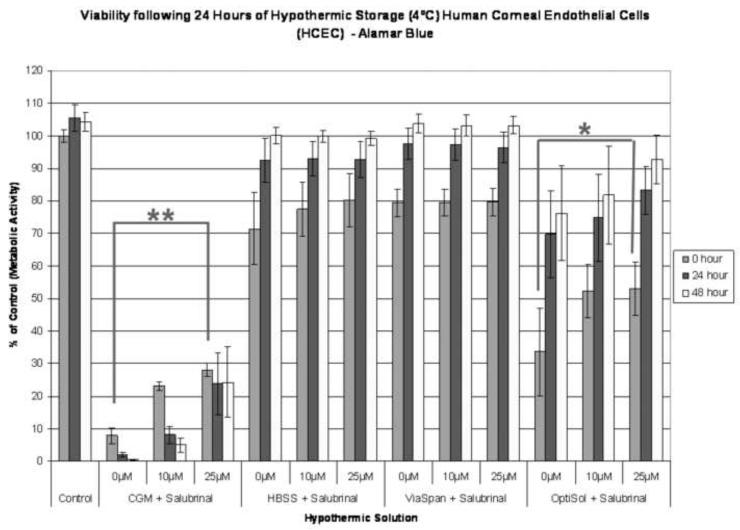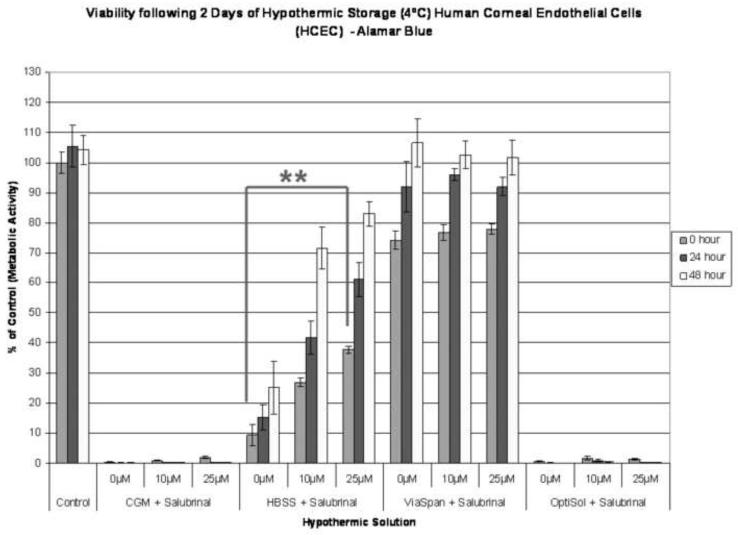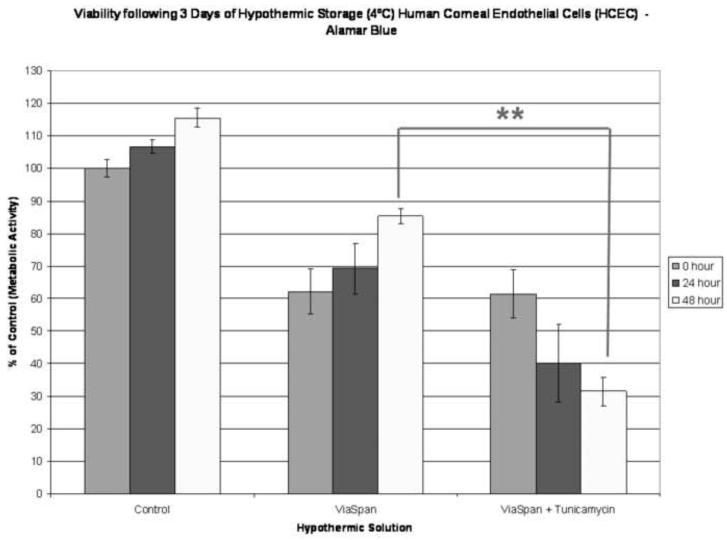Figure 3. UPR Specific Chemical Modulation on Human Corneal Endothelial Cell Survival.
(A) HCEC samples were stored at 4°C for 24 hours in Complete Media (CGM), HBSS with Ca++ and Mg++, ViaSpan, or OptiSol been supplemented with either 0μM, 10 μM, or 25 μM salubrinal (UPR inhibitor). Increased survival with salubrinal addition was seen in the CGM and OptiSol samples as post-thaw viabilities of 7.9%, 23.1% and 28.0% for CGM storage and 33.5%, 52.3% and 53.0% for OptiSol storage with 0μM, 10 μM, and 25 μM salubrinal, respectively. (** p<0.001, * p<0.01) (B) Samples were stored at 4°C for 2 days in Complete Media (CGM), HBSS with Ca++ and Mg++, ViaSpan, or OptiSol supplemented with either 0μM, 10 μM, or 25 μM salubrinal (UPR inhibitor). Increases in sample viability in the HBSS condition were observed with salubrinal additions (26.1% and 36.5% vs. 12.7% without addition). (** p<0.001) (C) HCEC’s were stored at 4°C for 3 days in ViaSpan supplemented with either 0μg/mL or 25 μg/mL tunicamycin (UPR inducer). Immediately, post storage no significant difference was observed with tunicamycin addition with viabilities of 62.2% (±6.9) without addition and 61.4% (±7.3) with tunicamycin. As samples were allowed to recover a significant difference was noted between the conditions as ViaSpan without tunicamycin re-grew to 85.4% (±2.4) viability while ViaSpan with tunicamycin addition declined to 31.5% (±4.4). (** p<0.001)



